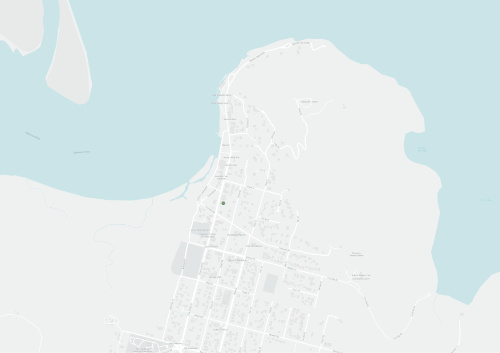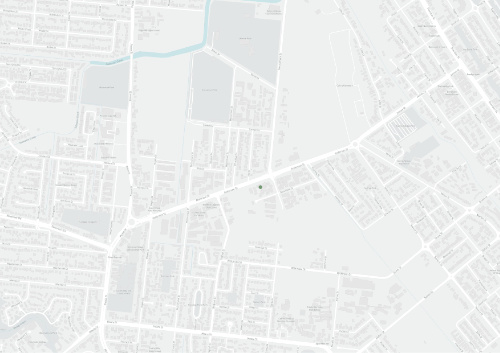Plan Explorer
Filter by:
Region
Topic
Sector
Other
Results
Western Cape Communities Trust investment strategy 2011-2022
This investment strategy released in 2011 presents an in-depth explanation of the funding allocation for the Western Cape Communities Trust, established by the Western Cape Communities Co-existence Agreement for a number of purposes such as natural resource management and funding allocation.
Western Cape Chamber of Commerce strategic plan 2010-2012
Obsolete CommunityThis strategic plan was developed following a review of the 2007 Western Chamber of Commerce Strategic Plan during a workshop in Weipa on the 20th of November 2009.
Western Cape Communities Trust & Western Cape Communities Coordinating Committee strategic plan 2009-2012
Obsolete StrategicThis document was released by the Western Cape Communities Trust (WCCT) and Western Cape Communities Coordinating Committee (WCCCC) as a plan to deliver on 4 key objectives within the mining lease area surrounding Weipa.
South of the Embley communities, heritage and environment management plan
Current OperationalThis community, heritage, and environment management plan was developed by the South of Embley working project group for the area of Rio Tinto Alcan's mining lease between Aurukun and Weipa in mid 2011.
Port of Weipa environmental management plan
Current StrategicThis environmental management plan was released by the North Queensland Bulk Ports Corporation as part of their environmental program with the objective of acting as a reference document for all then-current and potential users of the Weipa port.
Napranum Community Plan
Current CommunityThe Napranum Shire Council released a community plan in 2012 looking at future development for (then) the next 10 years.
Mapoon Aboriginal shire council community plan 2010-2020
Current CommunityThis community plan outlines how the community and council believe that the Mapoon area should develop between the 2010 and 2020 period and sets out how the issues affecting the Mapoon region at the time should've been addressed and a vision for the future Mapoon.
Cape York Peninsula Land Use Strategy: Land Use Program: Aspects of Commercial and Non-Commercial Fisheries of Cape York Peninsula
CYPLUSCYPLUS commissioned WBM Oceanics Australia to prepare this report which describes the level of use of commerical and non-commerical fisheries, factors affecing the environmental condition of said fisheries and habitats, and management issues relating to each of the fisheries and habitats in 1994.
Draft Cape York Peninsula Natural Resource Management Plan (2005)
Obsolete Government PolicyThe aim of the Plan is to ensure that natural resources are well managed, and protected where required, for the benefit of us all and future generations. The Plan aims as far as possible to be consistent with other regional strategies.
Kaanju Homelands Wenlock & Pascoe Rivers Cape York Peninsula Indigenous Protected Area Management Plan
Obsolete OperationalPrimarily, this Plan is for Kaanju people living on homelands, but it also serves as a guide for external land and resource management, conservation, service delivery, economic development and community development organisations and agencies, both government and non-government, engaged with Chuul
Kuuku I’yu Northern Kaanju Ngaachi Cultural Heritage Management Plan
Current OperationalThis document outlines the cultural heritage management plan for the Kuuku I’yu Northern Kaanju Ngaachi for the next six years from 2011 to 2017.
Cape York Peninsula Regional Biosecurity Strategy
Current StrategicCape York Natural Resource Management (Cape York NRM), Cook Shire Council (CSC), Weipa Town Authority, Wujal Wujal, Hopevale, Lockhart, Mapoon, Napranum, Aurukun, Pormpuraaw and Kowanyama Aboriginal Shire Councils and the Northern Peninsula Area Regional Council (NPARC) have collaboratively devel
Great Barrier Reef report card 2012 and 2013
Current InformationalThe Great Barrier Reef report card is part of the Reef Quality Water Protection Plan and measures the progress from 2009 to 2013 regarding the Reef Water Quality Protection plan 2009 targets.
Reef Water Quality Protection Plan 2009
Superceded StrategicThe intention of the Reef Water Quality Protection Plan 2009 was to ensure that the water quality of the Great Barrier Reef Lagoon was improved by addressing non-point source pollution caused by large-scale land use along the eastern coastline.
Northern Peninsula Area Council 2010-2020 Land and Environment Management Plan introduction
Current StrategicThis document is the introductory pages for the Northern Peninsula Area Council's 2010-2020 Land and Environment Management Plan released in December 2010.
Recently added
Threats to priority species of the Cape York Peninsula region
Current Government PolicyOn day one of the regional workshop, participants used their knowledge of individual species to identify the major and minor regional threats that are affecting each species. On day two of the regional workshop, species were grouped by major threats.
Cape York Peninsula Heritage Act 2007
Current Statutory (law)An Act to provide for the identification of the significant natural and cultural values of Cape York Peninsula, and cooperative and ecologically sustainable management of Cape York Peninsula.
Butchers Hill Station Pest Management Plan
Obsolete OperationalTo manage the land of Butchers Hill Station, in a sustainable way, by controlling weeds and pest animals on the property, and ensuring it’s economic and environmental viability continues into the future.
Bunata Property Pest Management Plan
Obsolete OperationalThis plan aims to protect the economy and environment of Bunata from the adverse impacts of weeds and feral animals.The objectives for weed and feral animal management in Bunata over the next 4 years are:
Brumby Hollow Property Pest Management Plan
Obsolete OperationalThis plan outlines the sustainable land management practices for Brumby Hollow over 4 years. Objectives are:
Annan and Endeavour Strategic Plan
Current StrategicThe Annan-Endeavour Catchment Management Group has developed this Strategy in close association with all interested community, government and industry groups.
Queensland's Agriculture Strategy
Current Government PolicyA 2040 vision to double agricultural production
Soil Conservation Act 1986
Current Statutory (law)An Act to consolidate and amend the law relating to the conservation of soil resources and to facilitate the implementation of soil conservation measures by landholders for the mitigation of soil erosion.
Draft Cape York Peninsula Natural Resource Management Plan (2005)
Obsolete Government PolicyThe aim of the Plan is to ensure that natural resources are well managed, and protected where required, for the benefit of us all and future generations. The Plan aims as far as possible to be consistent with other regional strategies.
Springvale Erosion Management Plan
CurrentIn 2016 the Queensland Government purchased Springvale Station, a 56,295ha property in Far North Queensland (Figure 1).

